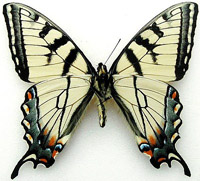Lepidoptera Survey
Date of this Version
4-28-2022
Document Type
Article
Citation
Taxonomic Report of the International Lepidoptera Survey (April 28, 2022) 10(4): 1-24
Also available at https://lepsurvey.carolinanature.com/ttr/ttr-10-3.pdf
Also available at the Internet Archive, the Biodiversity Heritage Library, Zobodat, and Zenodo
ZooBank registration: https://zoobank.org/References/F7F2600A-6690-4277-AFE7-F8DC85E1178F
Abstract
A new western azure species, Celastrina asheri, is described from the northwestern United States and southwestern Canada. A lectotype is designated for Lycaena pseudargiolus var. nigrescens Fletcher, 1903 to secure the identity of that name. C. asheri broadly overlaps with the northeastern range of C. echo (W. H. Edwards, 1864) but is usually very distinct from that species. C. lucia (W. Kirby, 1837) is narrowly sympatric with C. asheri in British Columbia, the southwest corner of Alberta and along the Rocky Mountains in Montana. As far as is known, C. asheri uses only red osier dogwood (Cornus sericea) and possibly oceanspray (Holodiscus discolor) as larval foodplants, while C. echo and C. lucia use a wide variety of larval foodplants. A lack of past research and confusion as a “form” of C. echo obscured the identity of C. asheri.


Comments
Copyright 2022, the International Lepidoptera Survey. Open access material
License: Creative Commons Attribution-ShareAlike-NonCommercial 4.0 International (CC BY-SA-NC 4.0 International)